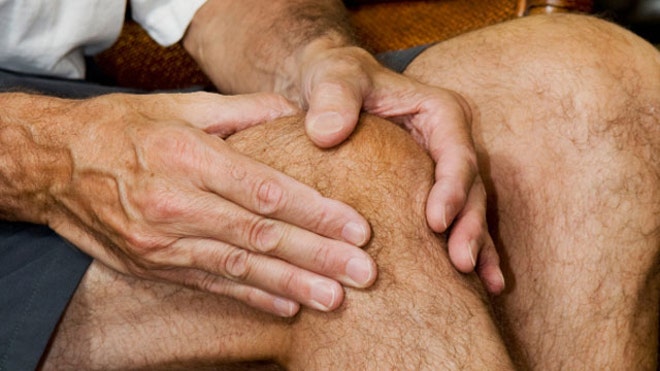
Shrugging off chronic knee pain as an inevitable part of aging puts men in their 70s at risk for accelerated muscle loss, falls and generally reduced quality of life, a new study suggests.
“This study confirms the findings of many studies indicating that chronic knee pain will seriously impact quality of life in older people,” lead author Marlene Franzen said.
Franzen is an associate professor of physiotherapy at the University of Sydney in Australia.
Nearly half of men over 70 have chronic knee pain, according to her team’s report in the journal in Age and Ageing.
“Chronic knee pain is not a ‘benign’ disease,” she told Reuters Health. “It does lead to a greatly increased risk of falls and developing mobility disability, and therefore increased risk of early mortality.”
Mobility disability means being unable to walk up or down stairs to the first floor without help and being unable to walk about half a mile without help, according to Franzen.
She and her coauthors tracked 1,587 men over age 70 for two years. About 640 of the men said they suffered from chronic knee pain at the start of the study. Two years later, another 150 reported experiencing bouts of chronic knee pain as well.
The researchers found that men with knee pain were nearly two and a half times more likely to have mobility disability than those without pain.
“Mobility disability among older people with chronic knee pain is serious as it has been associated with early mortality,” Franzen said.
The men with knee pain were also more likely to experience falls, which can be serious for people over 70, and to have reduced strength and mass in the muscles, tendons and ligaments that extend the knee, according to diagnostic scans.
The link between decreased leg muscle strength and chronic knee pain had only previously been established for women, Franzen said.
While some loss of muscle mass – about 1 percent a year – is typical with aging, Franzen’s team also measured changes in the strength of leg muscles that control the knee.
Past research has found the strength of those muscles drops by about 3.4 percent a year, and that was the rate Franzen’s group saw among men without knee pain. But for men who developed knee pain during the two-year study, muscle strength dropped by 4.5 percent a year.
“I think the evidence from this study and previous research would suggest that knee pain in older adults is associated with increased mobility problems, and this may be at least partly related to muscle strength declines,” David Scott said.
Scott studies the gradual loss of muscle mass that usually begins after age 30 at the University of Melbourne in Victoria, Australia, but was not involved in the new study.
“This might indicate that methods to improve lower-limb muscle strength in older adults, such as supervised exercise training, may have potential benefits both in decreasing the disability associated with knee pain, and also in preventing development of pain itself,” he said.
In the new study, obesity, back pain and higher levels of physical activity were more common in the group of men with knee pain. Men in their 80s, however, were less likely to have knee pain, which the authors attributed to their probably being more sedentary.
Knee pain usually becomes troublesome many years earlier than age 70, when people often have more physically demanding lifestyles or occupations, often in their 50s, Franzen said. Knee pain with age is even more common among women, she said.
For the obese, losing weight can help alleviate some knee pain, she said.
Otherwise, patients should see their doctors for an effective and safe pain management strategy, and a physiotherapist for a recommended physical activity program, Franzen said.
Source: News dump

